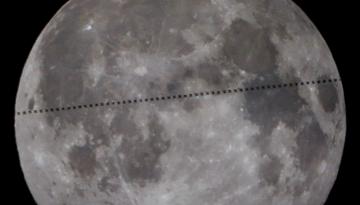
Scientists in US ramp up search for alien life
Scientists are ramping up their efforts in the search for signs of alien life.
Experts at the SETI Institute, a US organisation dedicated to tracking extraterrestrial intelligence, are developing state-of-the-art techniques to detect signatures from space that indicate the possibility of extraterrestrial existence.
Related News

Mysterious radio signals repeatedly emitting from single source in space

Stunning videos show space station passing across 'super snow moon'
These so-called "technosignatures" can range from the chemical composition of a planet's atmosphere, to laser emissions, to structures orbiting other stars, among others, they said on Thursday.
"Determining whether we are alone in the universe as technologically capable life is among the most compelling questions in science," said Dr Tony Beasley, director of the National Radio Astronomy Observatory (NRAO) telescope based in Virginia.
SETI scientists plan to develop a system that will "piggyback" on the Very Large Array (VLA) telescope based in Mexico and provide data to their technosignature search system.
"As the VLA conducts its usual scientific observations, this new system will allow for an additional and important use for the data we're already collecting," Dr Beasley.
Life forms, whether intelligent or not, can produce detectable indicators such as large amounts of oxygen, smaller amounts of methane, and a variety of other chemicals, the experts said.
So in addition, scientists are also developing computer models to simulate extraterrestrial environments that can help support future searches for habitable planets and life beyond the solar system.
Meanwhile, SETI's Breakthrough Listen Initiative, which launched in 2015 to "listen" for signals of alien life, has released nearly two petabytes of data from the most comprehensive survey yet of radio emissions from the plane of the Milky Way galaxy and the region around its central black hole.
The organisation is now inviting the public to search the data, gathered from various telescopes around the world, and look for signals from intelligent civilisations.